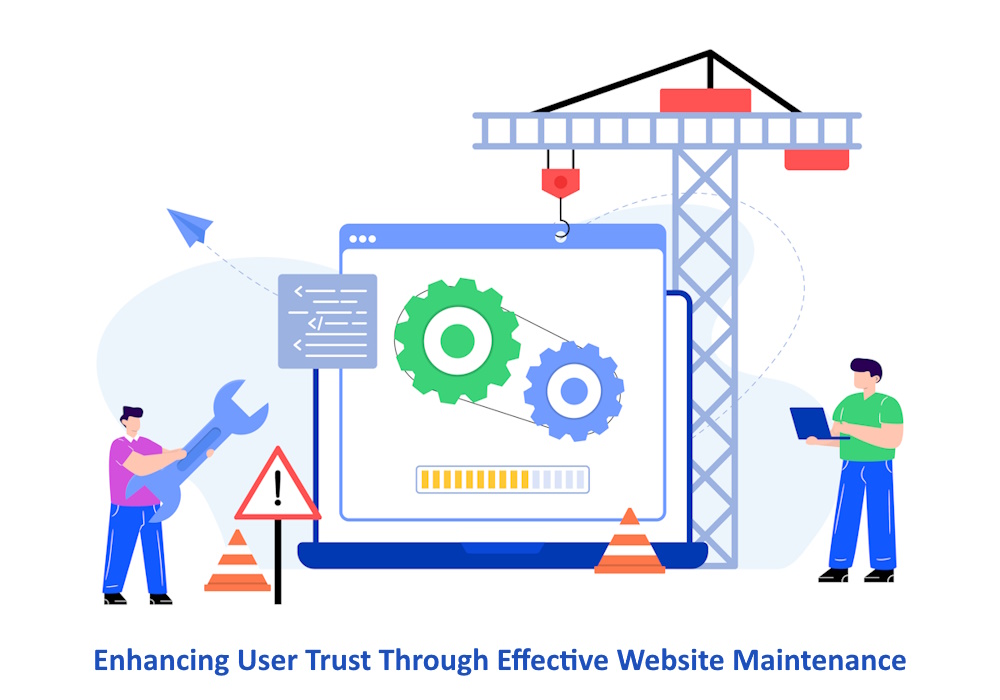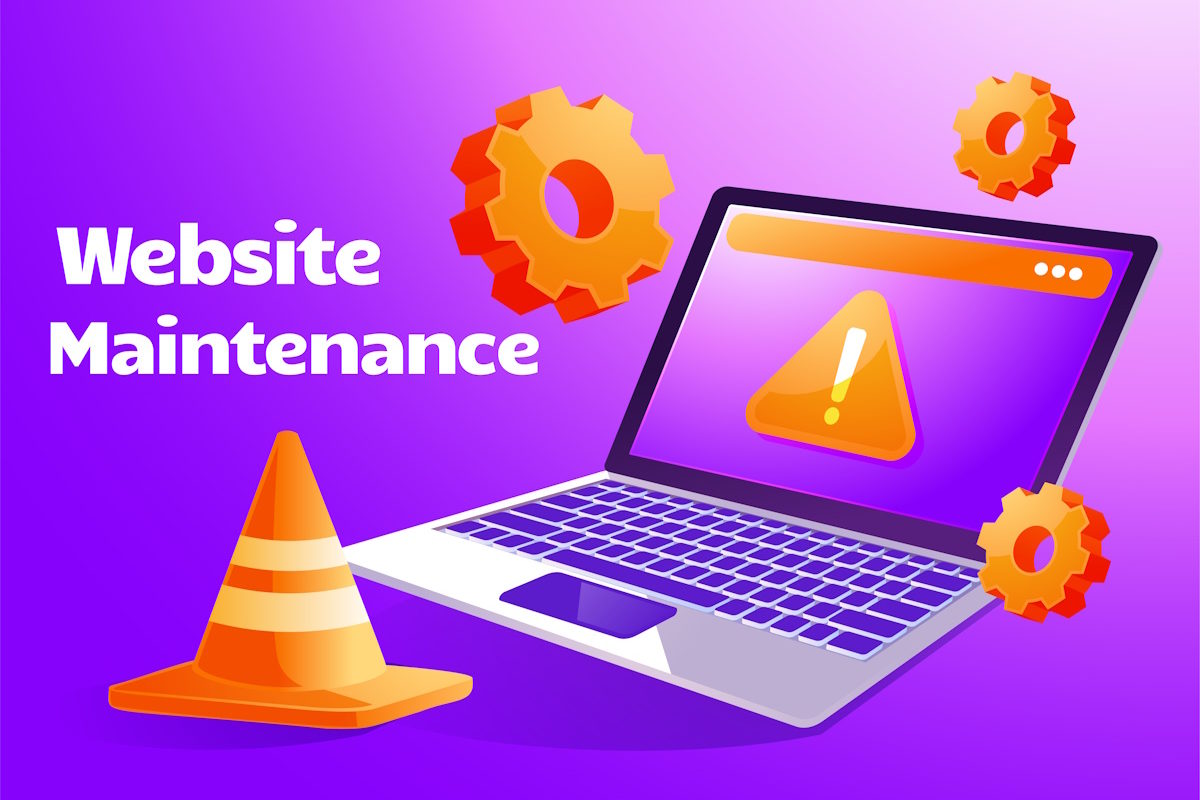Maintaining a high level of user trust is an essential aspect of any successful online operation. It is particularly important in today’s digital era, where a single poor experience can lead users to seek alternative sites within seconds. One key factor influencing user trust is the effectiveness of website maintenance.
Website maintenance can be viewed as the silent guardian of your digital presence, often overlooked but critically important. It helps ensure your site is secure, up-to-date, and running smoothly, all of which are crucial to maintaining and enhancing user trust.

Importance of Regular Updates
Regular updates are a crucial part of website maintenance services. Not only do they address potential security vulnerabilities, but they also deliver the most recent features and improvements to your users. Regular updates demonstrate to users that your site is managed professionally, enhancing their trust.
Security
Regular updates help in identifying and fixing potential security threats, ensuring that user data remains safe and secure.
Functionality
Updates often come with improved functionality, making the user interface more intuitive and easy to navigate. This enhances the overall user experience.
Latest Features
Users appreciate when websites stay on top of trends and continuously offer the latest features. Regular updates serve this purpose, keeping your site fresh and engaging.
Performance
Regular updates also mean improved performance. They often help in reducing load times and increasing site speed, which users highly value.
Trust Building
When users see a site that’s regularly updated, it signals professionalism and dedication. This contributes to the establishment of trust and confidence in your brand.
Role of User Experience
User experience plays an integral role in establishing trust. Website maintenance services ensure a well-maintained website that provides a seamless, intuitive user experience, which can retain existing users and attract new ones. On the other hand, broken links, slow loading times, or frequent downtime can erode trust quickly.
Intuitiveness
A user-friendly website should be easy to navigate, and information should be easy to find. The simpler the site structure and navigation, the more likely users are to stay and explore.
Responsiveness
An effective website should be responsive. It should load quickly and function efficiently on various devices and screen sizes. Users have a low tolerance for slow or glitchy sites.
Design
The overall aesthetic of a website contributes to the user experience. A visually appealing, professional design can enhance trust and encourage users to engage more with your content.
Accessibility
Accessibility is a crucial part of user experience. Ensuring your website is accessible to all users, including people with disabilities or those using assistive technologies, portrays your brand as inclusive and considerate.
Content
High-quality, relevant, and engaging content that provides value to your users can significantly enhance the user experience. Content should be well-organized, free of errors, and updated regularly for the best user experience.
Interactivity
Websites that interact with users through forms, surveys, or live chat features can provide a more personalized user experience. These features can improve customer service and show users you value their input and feedback.
Consistency
Consistency in design, tone, and messaging across all pages of a website can make the user experience more cohesive and enjoyable. This consistency also helps to strengthen brand identity and trust.
Security Measures
Security is a paramount concern for users today. Therefore, robust security measures, including website maintenance services, are an essential part of maintaining a secure website. Simple steps such as regular software updates, the use of HTTPS, and prompt responses to any security threats can significantly enhance user trust.
Regular Updates
Regularly updating your website software is a fundamental step in maintaining security. This includes your CMS, plugins, and any other tools or applications you utilize. Updates often contain patches for known vulnerabilities, which can close loopholes and prevent attacks.
Use of HTTPS
Implementing HTTPS (Hyper Text Transfer Protocol Secure) is a critical measure for every website. HTTPS encrypts data transferred between the user’s browser and the website, protecting it from interception by third parties.
Strong Password Policies
Enforcing strong password policies can significantly enhance the security of your website. Encourage users to create complex passwords and change them regularly to reduce the risk of unauthorized access.
Secure User Data
If your website collects personal data from users, it’s essential to secure it effectively. Use encryption for data storage and consider anonymization techniques where appropriate.
Proactive Threat Detection
Employ robust security testing tools such as firewalls, malware scanners, and intrusion detection systems to preemptively identify and thwart potential threats.
Quick Response to Security Threats
Timely response to security threats is crucial to minimize damage. Have a plan in place to handle potential security incidents, including identifying the problem, isolating affected systems, and implementing solutions.
Conclusion
In the evolving landscape of digital a, maintaining the integrity and safety of your website is a dynamic, ongoing process. Regular updates, use of HTTPS, strong password policies, and secure user data management form the backbone of a robust website security strategy.
Proactive threat detection and a quick response to security threats are equally crucial. These practices, regardless of the size or nature of your online presence, provide a strong foundation for safeguarding against breaches. By doing so, you can augment user trust and ensure the longevity of your digital assets. In the world of cybersecurity, it’s always wiser to focus on prevention rather than finding a cure afterwards.
Author Bio:
Arjun Solanki is a Business Growth Strategist at a Leading Software Development Company. He has experience in developing and executing digital strategies for large global brands in a variety of business verticals. Apart from working on a long-lasting relationship with customers and boost business revenue, he is also interested in sharing my knowledge on various technologies and its influence on businesses through effective blog posts and article writing.




